News
Last News Items
 Detection of an interface-specific coherent phonon mode – Publication by B5 (Höfer/Mette), A1 (Stolz) and A5 (Volz) in Advanced Materials Interfaces9. February 2025 - 11:29
Detection of an interface-specific coherent phonon mode – Publication by B5 (Höfer/Mette), A1 (Stolz) and A5 (Volz) in Advanced Materials Interfaces9. February 2025 - 11:29 Ultrafast switching of trions in 2D materials by terahertz photons – Publication by B9 (Malic) in Nature Photonics23. September 2024 - 09:32
Ultrafast switching of trions in 2D materials by terahertz photons – Publication by B9 (Malic) in Nature Photonics23. September 2024 - 09:32 The International Conference on Internal Interfaces, ICII-24, was held in Marburg19. September 2024 - 14:14
The International Conference on Internal Interfaces, ICII-24, was held in Marburg19. September 2024 - 14:14 35. Erfinderlabor: Scientific curiosity of the next Generation4. June 2024 - 08:55
35. Erfinderlabor: Scientific curiosity of the next Generation4. June 2024 - 08:55 Synthesis of 2D Gallium Sulfide with Ultraviolet Emission by MOCVD – Publication by A4 (Gottfried), A5 (Volz), A14 (Volz) and B2 (Chatterjee) in Small25. May 2024 - 15:04
Synthesis of 2D Gallium Sulfide with Ultraviolet Emission by MOCVD – Publication by A4 (Gottfried), A5 (Volz), A14 (Volz) and B2 (Chatterjee) in Small25. May 2024 - 15:04 Probing electron-hole Coulomb correlations in the exciton landscape of a twisted semiconductor heterostructure – Publication by B9 (Malic) in Science Advances7. February 2024 - 12:00
Probing electron-hole Coulomb correlations in the exciton landscape of a twisted semiconductor heterostructure – Publication by B9 (Malic) in Science Advances7. February 2024 - 12:00 Heteroepitaxy in Organic/TMD Hybrids and Challenge to Achieve it for TMD Monolayers: The Case of Pentacene on WS2 and WSe2 – Publication by A2 and B58. January 2024 - 10:06
Heteroepitaxy in Organic/TMD Hybrids and Challenge to Achieve it for TMD Monolayers: The Case of Pentacene on WS2 and WSe2 – Publication by A2 and B58. January 2024 - 10:06 Layer-by-layer deposition of organic molecules controlled by selective click reactions – Publication by A8 (Koert/Dürr) in Chemistry of Materials 23. December 2023 - 14:48
Layer-by-layer deposition of organic molecules controlled by selective click reactions – Publication by A8 (Koert/Dürr) in Chemistry of Materials 23. December 2023 - 14:48 Enhanced Circular Dichroism and Polarized Emission in an Achiral, Low Band Gap Bismuth Iodide Perovskite Derivative5. October 2023 - 11:25
Enhanced Circular Dichroism and Polarized Emission in an Achiral, Low Band Gap Bismuth Iodide Perovskite Derivative5. October 2023 - 11:25 34. Erfinderlabor: Scientific curiosity of the next Generation1. August 2023 - 14:34
34. Erfinderlabor: Scientific curiosity of the next Generation1. August 2023 - 14:34
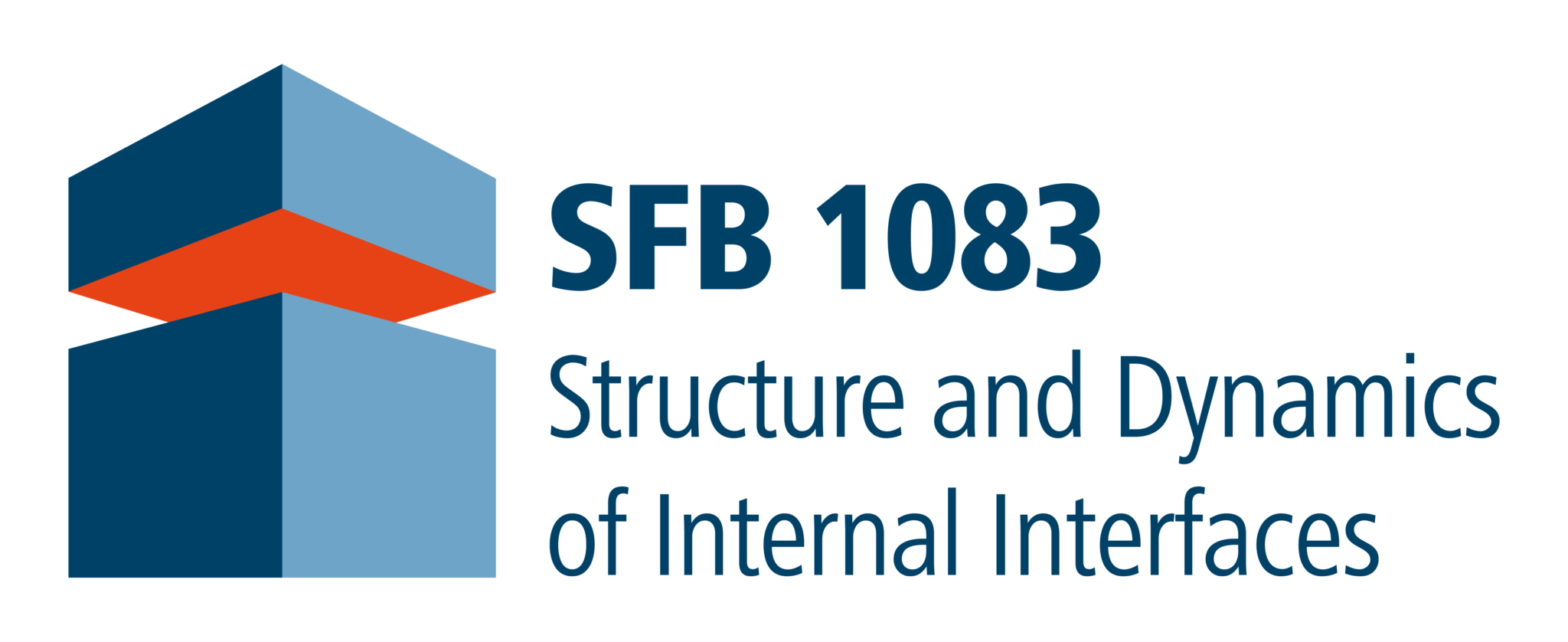
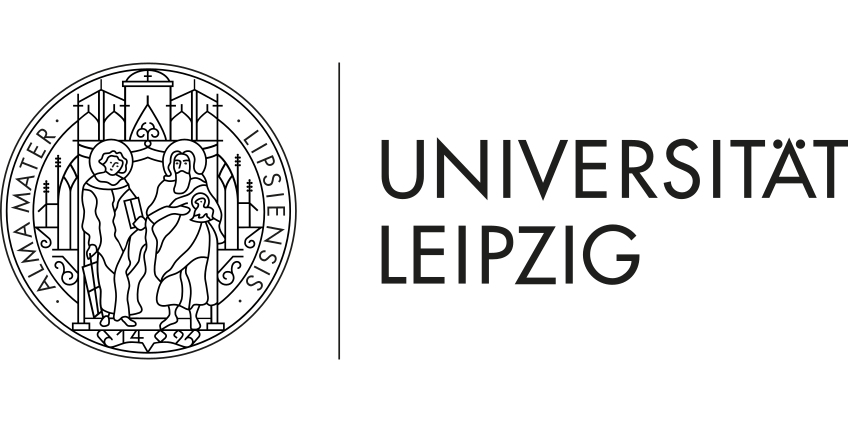
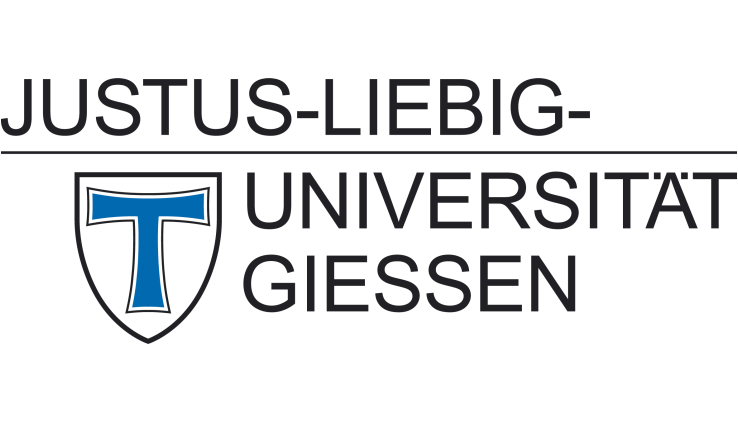


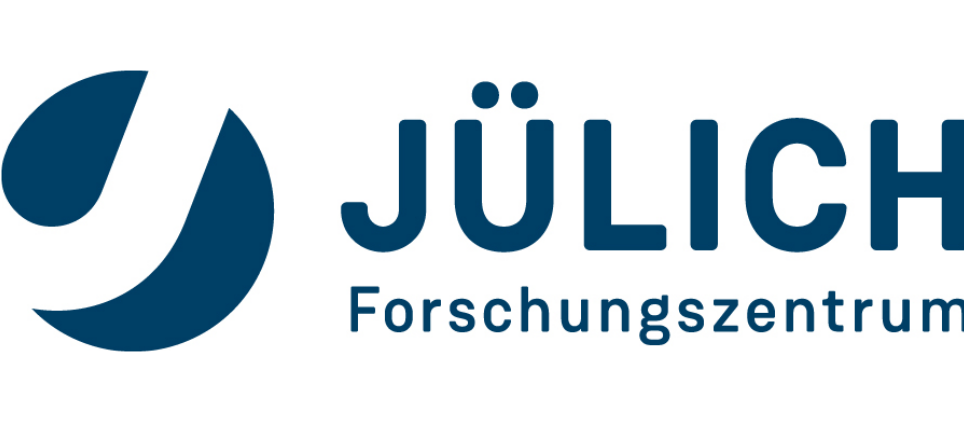
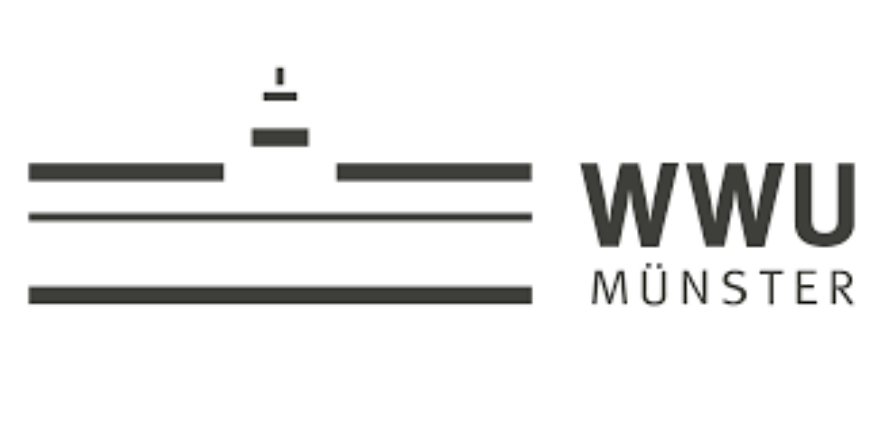
Lisa Pecher awarded dissertation prize of Philipps-Universität Marburg
/in News /by sfb1083Congratulations to Dr. Lisa Pecher, former PhD-student of the SFB in the Tonner group (Project A6), for being awarded the Kurt-Dehnicke prize of the Department of Chemistry for her outstanding PhD thesis finalized in 2017.
Lisa Pecher brought significant progress to the understanding of how organic molecules interact with semiconductor surfaces. In her thesis titled “Adsorption Dynamics and Bonding Analysis of Organic Molecules on Silicon(001) Surfaces” – funded and supported by SFB 1083 – she combined static and dynamic quantum-chemical methods with insightful qualitative and quantitative analysis of the electronic structure in extended systems to provide a unique view on the interaction between adsorbates and surfaces. She developed new, efficient approaches to tackle the complex interplay of atomic and electronic effects that need to be treated accurately to derive new insights. Inspired by chemical bonding concepts successfully used in molecular chemistry, she revealed surprising parallels in the realm of surface chemistry. For example, she pointed out for the first time that a well-known reaction mechanism for organic chemistry –second-order nucleophilic substitution – can be found in the reaction of ether molecules with silicon surfaces. This was the key insight explaining the product distribution and published in the chemistry flagship journal Angewandte Chemie (link).
In a further step towards actual device applications, the authors then transferred their findings and the developed preparation protocols to polycrystalline electrodes, demonstrating that the same work function changes can be observed also on “real-life” electrodes. With the end user in mind, the team also tested the air stability of their contact primers, proving that a sacrificial phthalocyanine multilayer serves well to protect the highly ordered mono- and bilayer contact primers during air transfer and can be removed by thermal desorption afterwards.
This was just one of nine publications in major scientific journals – all of them as first author, two of them highlighted on the cover pages. She summarized these impressive scientific results in a review article which was highlighted by science writers and bloggers worldwide (see the SFB news item for more details).
More coverage of the prize-giving event is found here (in German).
Johannes Reimann awarded dissertation prize of Philipps-Universität Marburg
/in News /by sfb1083Congratulations to Dr. Johannes Reimann, doctoral student in SFB-project B6 (Höfer), for being awarded a prize by Philipps- Universität Marburg for his excellent dissertation presented in 2018.
In the framework of his thesis, Johannes Reimann advanced the development of time- and angle-resolved photoelectron spectroscopy within the group of Prof. Höfer. In particular, his work is the first to combine this powerful technique with Terahertz excitation and to achieve subcycle time resolution. In collaboration with the group of Prof. Rupert Huber in Regensburg, he succeeded in taking band structure movies of electrical currents carried by Dirac electrons as they are driven by an intense THz wave. First results were published in Nature in September 2018 (see also SFB news, university press release.
The results of Johannes Reimann’s work hold great promise to realize new lightwave-driven electronics, a concept to increase the clock rates of conventional semiconductor devices by a factor of 1000 and more. Moreover, the successful demonstration of the combination of intense THz pulses as pump and angle-resolved photoelectron spectroscopy (ARPES) as probe, has triggered worldwide experimental efforts to take advantage of THz-APRES for time-resolved investigation of a variety of solids, surfaces and interfaces.
See here for details of the event.
Novel single-atom sensitive imaging – Publication in Nature Materials by A12 (Tautz)
/in News /by sfb1083The team of researchers from Jülich, supported by SFB 1083 together with external partners, has developed a new method to measure the electric potentials of a sample with atomic accuracy. Using conventional methods, it was virtually impossible until now to quantitatively record the electric potentials that occur in the immediate vicinity of individual molecules or atoms. The new scanning quantum dot microscopy method, presented in the journal Nature Materials, also opens new ways of characterizing internal interfaces, as they often involve charge transfer and therefore show unique signatures in their electric potential.
Image from a scanning tunnelling microscope (STM, left) and a scanning quantum dot microscope (SQDM, right). Using a scanning tunnelling microscope, the physical structure of a surface can be measured on the atomic level. Quantum dot microscopy can visualize the electric potentials on the surface at a similar level of detail – a perfect combination. (Copyright: FZ Jülich, Christian Wagner)
The positive atomic nuclei and negative electrons of which all matter consists, produce electric potential fields that superpose and compensate each other, even over very short distances. Conventional methods do not permit quantitative measurements of these microscopic fields, which are responsible for many material and interface properties and functions at the nanoscale. Almost all established methods capable of imaging such potentials are based on the measurement of forces that are caused by electric charges. Yet these forces are difficult to distinguish from other forces that occur on the nanoscale, which prevents quantitative measurements.
Four years ago, however, the scientists from Forschungszentrum Jülich discovered a method based on a completely different principle. Scanning quantum dot microscopy involves attaching a single organic molecule – the “quantum dot” – to the tip of an atomic force microscope. The molecule is so small that individual electrons from the tip of the atomic force microscope can be attached to the molecule in a controlled manner. With the new method it is not only possible to visualize the electric fields of individual atoms and molecules, it is also possible to quantify them precisely.
Finally, scanning quantum dot microscopy is particularly well-suited to study internal interfaces. This is illustrated, e.g., by its ability to clearly resolve sub-surface defects, as the team around Stefan Tautz has already demonstrated. For such investigations, the long-range nature of electrostatic potentials is an asset.
Publication
C. Wagner, M.F.B. Green, M. Maiworm, P. Leinen, T. Esat, N. Ferri, N. Friedrich, R. Findeisen, A. Tkatchenko, R. Temirov, and F.S. Tautz,
Quantitative imaging of electric surface potentials with single-atom sensitivity
Nature Materials (2019) DOI: 10.1038/s41563-019-0382-8
See also read-only access and German press release by FZ Jülich, as well as Nature Materials News & Views.
Contact
Prof. Dr. Stefan Tautz
Forschungszentrum Jülich
Peter Grünberg Institut
SFB 1083 project A12
Tel.: 02461 61 4561
EMAIL
Smaller, faster, more efficient? – Review by A5 (Volz)
/in News /by sfb1083In their review paper, Andreas Beyer and Kerstin Volz describe in detail their investigation of novel composite materials, which may eventually replace today’s silicon-based electronic devices. As the latter increasingly reach their performance limit, one option to overcome these largely physics-based limitations is to cover silicon with a different material layer.
Experimentally measured and simulated structure of the galliumphospide/silicon-interface at atomic resolution. Electron diffraction patterns allow to determine the interfacial charge distribution.
However, covering silicon with different material layers like, for example, well-suited III/V semiconductors (containing elements of the 3rd and 5th group of the periodic system) is challenging. In joining different materials with their individual physico-chemical properties their interface may be marked by defects. Here, for example, “erroneous” attachments may lead to unwished-for local charges – rendering the combined material as unsuitable for application in devices.
The group of Kerstin Volz closely studied galliumphosphide on silicon as a model system of III/V semiconductors on silicon. In their invited review the authors now describe the various electron-microscopy-based approaches employed in the study of the internal interface between the two materials and its defects. By means of transmission-electron-microscopy the researchers were able to show that the interface between the two materials is far from smooth; in fact, it more resembles a pyramidal structure affecting several atomic layers. In addition, it was also possible to “see” the erroneous atomic attachments which cause the unwished-for charge effect and link the phenomenon directly to changes in preparatory procedures.
The insights gained will be applied to perfecting preparation methods in order to reduce the number of defects and to fine-tuning the interface with a focus on raising the efficiency of existing devices and encouraging the development of novel applications.
Publication
A. Beyer and K. Volz,
Quantitative Electron Microscopy for III/V on Silicon Integration
Adv. Mater. Interfaces (2019) DOI: 10.1002/admi.201801951
Contact
Prof. Dr. Kerstin Volz
Philipps-Universität Marburg
SFB 1083 project A5
Tel.: 06421 28 22297
EMAIL
PI Seminar 2019 in Oberheimbach
/in News /by sfb1083The secluded setting in Oberheimbach provided the right framework for ample conversation in changing smaller and bigger groups and discussion of possible new research agendas for the third funding period of SFB 1083.
For details of the program please follow the link.
SFB 1083 in partnership with Chemikum Marburg supports Girls’ Day 2019
/in News /by sfb1083SFB 1083’s Ö-project closely cooperates with Chemikum Marburg e.V. by installing at its premises several new experiments and workshops providing hands-on insights into the SFB’s research objective and the study methods employed. In 2019, for a second time, the partnership supported Girls’ Day activities with dedicated offerings.
Girls’ Day 2019 with its 50 young (agegroup 10-16) female participants benefitted from these offerings, which included the application of acid-base-reactions, measuring thermal signatures of chemical reactions and electrical conductivity in various substances. The experiments provide insight into the central research aspect of SFB 1083: “What are the reactions taking place at the interface, that is the contact between two materials?”
“Girls’ Day allows us to showcase how researchers work. In interesting experiments and workshops we can entice enthusiasm for MINT-disciplines in female pupils”, state Prof. Stefanie Dehnen and Dr. Christof Wegscheid-Gerlach, director and co-director of Chemikum Marburg and principal investigators of SFB 1083’s Ö-project.
A special informatics-focused workshop, in cooperation with Michael Szabo (Fachdidaktik Informatik PUM/MLS), showcased how disciplines work together and how modern research needs detailed programming for optimal analytical results. The SFB’s Atomic Force Microscope (AFM), for example, needs a complex range of operational programming to realize its full potential. This was demonstrated using the Lego-model and it rapidly became obvious to the riveted audience how programming controls the instrument’s operation. 18 girls were then guided in developing their own little programs using the language scratch. At the end of the 3-hour workshop the young participants had all succeeded in letting their “dog run around the lake” and teasing out the impact of minor changes to their code.
See also a press release in German.
Contact
Dr. Christof Wegscheid-Gerlach
Chemikum Marburg
SFB 1083 project Ö
Tel.: 06421 28 25252
EMAIL
Organic monolayers can reduce contact resistances in organic electronics – Publication by A2 (Witte)
/in News /by sfb1083In a detailed study, Felix Widdascheck, Alrun Hauke and Gregor Witte from SFB-project A2 show how phthalocyanine monolayers can be used to control the work function of noble metal electrodes, both in single crystalline model systems and for real life polycrystalline electrodes.
The work function of bare metal surfaces (yellow) can be modified by a thin layer of phthalocyanines (blue) to reduce injection barriers in organic electronic devices. (Image: F. Widdascheck).
Work function tailoring by means of organic monolayers is one of several promising approaches to reducing the contact resistance at the interface between metal electrodes and organic semiconductors in organic electronics devices.
In their study Felix Widdascheck and coauthors used several polar and non-polar phthalocyanines to modify the work functions of noble metal electrodes. As a starting point, they performed a detailed STM and Kelvin probe analysis of the coverage-dependent work function changes of Au and Ag single crystal surfaces. The authors find that the work function changes strongly depend on both coverage and the type of phthalocyanine used as the contact primer. Their phenomenological description of the observed trends provides important groundwork for more detailed theoretical modeling of the processes taking place at the complex internal interface between metal, monolayer and organic semiconductor.
In a further step towards actual device applications, the authors then transferred their findings and the developed preparation protocols to polycrystalline electrodes, demonstrating that the same work function changes can be observed also on “real-life” electrodes. With the end user in mind, the team also tested the air stability of their contact primers, proving that a sacrificial phthalocyanine multilayer serves well to protect the highly ordered mono- and bilayer contact primers during air transfer and can be removed by thermal desorption afterwards.
Publication
F. Widdascheck, A.A. Hauke and G. Witte,
A Solvent-Free Solution: Vacuum-Deposited Organic Monolayers Modify Work Functions of Noble Metal Electrodes
Adv. Funct. Mater. (2019) DOI: 10.1002/adfm.201808385
See also press release in German.
Contact
Prof. Dr. Gregor Witte
Philipps-Universität Marburg
SFB 1083 project A2
Tel.: 06421 28 21384
EMAIL
New ways of controlling and analyzing organic reactions on silicon surfaces – Publications by A8 (Koert/Dürr) & B5 (Höfer/Mette) and A6 (Tonner)
/in News /by sfb1083In a joint effort, the groups of SFB-projects A8 and B5 used scanning tunneling microscopy for controlling the final products of a textbook-type reaction of organic molecules on silicon surfaces. A detailed understanding of the driving forces of these reactions are obtained by means of energy decomposition analysis as developed in SFB-project A6.
The isomers naphthalene (left) and azulene (right) bind very differently to a copper surface: While naphthalene forms a weak bond (physisorption), azulene engages in a strong chemical bond with substantial charge transfer (chemisorption).
Ether cleavage on silicon is the surface analogue of an SN2 reaction; SN2 reactions represent the textbook example for how to control solution-based chemical reactions by means of steric hinderance or the choice of solvent. In an STM study published in Angewandte Chemie, the team around Gerson Mette and Michael Dürr has now shown that tip-induced ether cleavage on Si(001) leads to additional final products which are not obtained by thermal activation. Moreover, different final products can be selectively addressed by different excitation channels, either direct excitation by electron transfer or multiple excitation of vibrational modes. As the two channels can be selectively addressed by the tunneling bias, a new way of reaction control was achieved.
In parallel, the advances in the theoretical description of these systems are illustrated in a review article by Lisa Pecher and Ralf Tonner. Within the framework of density functional theory, the chemists of A8 successfully applied energy decomposition analysis to extended systems in order to derive bonding concepts for molecules on surfaces. This allows to interpret experimental results and predict new reaction schemes.
Publications
G. Mette, A. Adamkiewicz, M. Reutzel, U. Koert, M. Dürr, and U. Höfer,
Controlling an SN2 reaction by electronic and vibrational excitation ‐ tip‐induced ether cleavage on Si(001)
Angew. Chemie Int. Ed. 58/11 (2019) 3417-3420 DOI: 10.1002/anie.201806777
L. Pecher and R. Tonner,
Deriving bonding concepts for molecules, surfaces, and solids with energy decomposition analysis for extended systems
WIREs Comput. Mol. Sci. (2018) (21pp) DOI:10.1002/wcms.1401
See also joint press release by the universities of Gießen and Marburg under the auspices of the Forschungscampus Mittelhessen ( in German).
Contact
Prof. Dr. Michael Dürr
Justus-Liebig-Universität Gießen
SFB 1083 project A8
Tel.: 0641 993490
EMAIL
Molecular topology critically controls metal-organic interfaces in electronic devices – Publication by A4 (Gottfried), A6 (Tonner), & A12 (Tautz/Bocquet/Kumpf)
/in News /by sfb1083In organic electronic devices, such as modern displays with organic light-emitting diodes (OLEDs), organic materials connect to metal electrodes. The resulting metal–organic interfaces, which are in the focus of SFB 1083, determine important performance parameters such as rates of charge-carrier injection. Precise control over the interface properties, especially the wave-function overlap and the energy-level alignment, is therefore critical for rational improvement of organic electronic devices. Here, the SFB 1083 projects A4, A6 (both Univ. Marburg) and A12 (at FZ Jülich), together with groups in Utrecht (NL), Warwick (UK) and Erlangen (DE), show that the properties of metal-organic interfaces depend strongly on the linking pattern of the atoms in the organic material.
In organic semiconductors, the carbon atoms are typically laid out in a honeycomb-like sheet of abutting six-sided rings. If the sheet contains no odd-numbered rings, it is described as an “alternant topology.” Researchers rarely consider nonalternant topologies, which occur when the structure contains, for example, five- or seven-sided rings. To elucidate the influence of the topology on the interaction with a metal surface, the authors compare the aromatic hydrocarbon naphthalene to its nonalternant isomer, azulene, and study their interactions with a copper surface.
Azulene-like nonalternant 5-7 structural element embedded in a graphene lattice (right), compared to the ideal graphene lattice left. The figure shows sections through the charge density for both systems, according to DFT calculations. The 5-7 element accumulates negative charge (red) at the 5-membered ring and positive charge (blue/white) at the 7-membered ring. Copyright by CC-BY 4.0.
Benedikt Klein and his co-workers find that azulene forms a much stronger and shorter bond to copper than naphthalene. Spectroscopic analysis of the electronic structure reveals that azulene forms a true chemical bond and receives negative charge from the surface, whereas naphthalene bonds only weakly and does not exchange charge. Theoretical analysis reveals that the influence of the topology on the electronic structure, especially the lowest unoccupied molecular orbital, is responsible for the different behavior. This comprehensive analysis of a surface chemical bond was only possible through a multi-technique approach, which involved a collaboration between six research groups from experiment and theory, including three from SFB 1083. Important contributions were made by the groups of Ingmar Swart (Utrecht, NL), Reinhardt Maurer (Warwick, UK), and Wolfgang Hieringer (Erlangen, DE).
Based on their findings, the authors propose that the incorporation of nonalternant structural elements can be used to control and optimize performance-related properties of functional metal–organic interfaces.
Publication
B. P. Klein, N. J. van der Heijden, S. R. Kachel, M. Franke, C. K. Krug, K. K. Greulich, L. Ruppenthal, P. Müller, P. Rosenow, S. Parhizkar, F. C. Bocquet, M. Schmid, W. Hieringer, R. J. Maurer, R. Tonner, C. Kumpf, I. Swart, and J. M. Gottfried, Molecular topology and surface chemical bond: alternant versus nonalternant aromatic systems as functional structural elements, Physical Review X 9/1(2019) 011030 (17pp) DOI:10.1103/PhysRevX.9.011030
Contact
Prof. Dr. Michael Gottfried
Philipps-Universität Marburg
SFB 1083 project A4
Tel.: 06421 28-22541
EMAIL
“Frauenförderpreis 2018” for Prof. Dr. Stefanie Dehnen (A9)
/in News /by sfb1083Professor Dehnen with Prof. Dr. Katharina Krause (president of Philipps-Universität Marburg), Prof. Dr. Carmen Bickle, and Dr. Nina Schumacher (women and equal opportunity officer). (Photo: Henrik Isenberg)
The “Frauenförderpreis” of Philipps-Universität Marburg is awarded every two years since 1998 and worth 2500 EUR. It recognizes Prof. Dr. Stefanie Dehnen and Prof. Dr. Carmen Birkle for their strong mentorship and in the case of Professor Dehnen in particular for her participation as a mentor for early-career female academic staff in the Hessen-wide project “SciMento” and her enduring engagement for a family-friendly research environment.
In balancing a professorship and family-life with four young children, Stefanie Dehnen is living proof that having both, a research career and a family is possible.